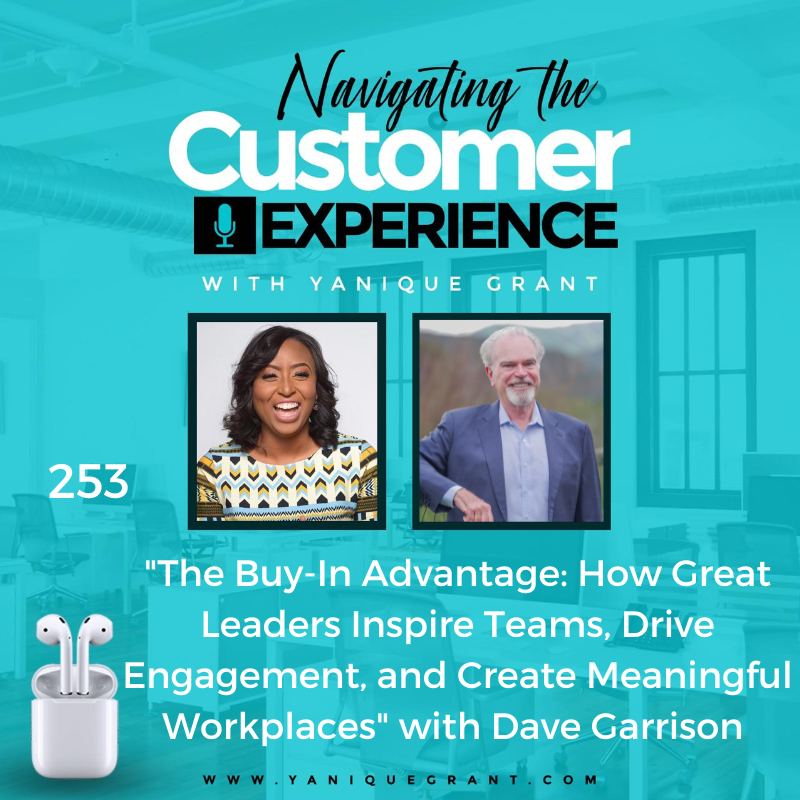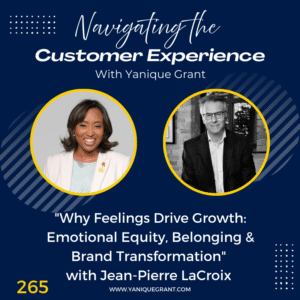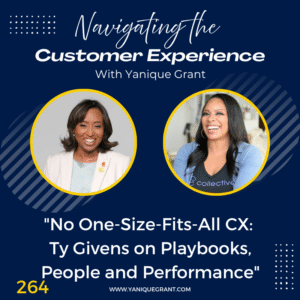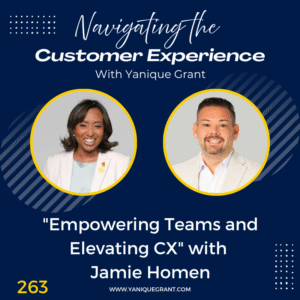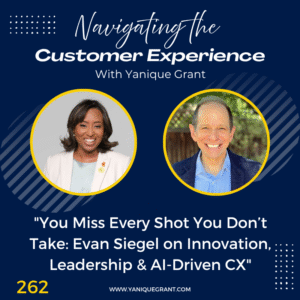Dave Garrison is a leadership strategist with more than 25 years of experience as a CEO, strategic advisor and independent board member for the public and private companies, such as Ameritrade, both in the United States and internationally.
He co-founded Garrison Growth in 2013 to help organizations, ranging from new startups to major public corporations, get the best possible results from their teams.
A Young Presidents’ Organization (YPO) member since 1993, Dave has conducted workshops with thousands of YPO leaders and currently serves as chair of YPO’s Leadership Development Network, which has 30,000 qualified CEOs as members.
He’s a sought-after by media outlets such as CNBC, CNN and the Wall Street Journal for his expertise as a CEO and as an industry pioneer in communications. A lifelong learner, Dave has an MBA from Harvard Business School and has been trained in the Entrepreneurial Operating System (EOS), neuro-linguistic programming and DISC.
Questions
- Can you tell our listeners just a little bit about your journey, how you got from where you were to where you are today?
- In the book, you talk about gas factor, I was quite fascinated about the gas factor. What’s the most surprising cause of this engagement that you’ve uncovered in your consulting work?
- Why do you believe these things are missing the mark, and what do you think will actually help to move the needle, to get employees more engaged?
- Now you do emphasize that leadership must move from control to empowerment, and for those of our listeners that may be micro managers, what’s the first habit that you would suggest they employ to ensure that they’re going to break this habit?
- Now, the book focuses on three pillars, inspired people, smart outcomes and empowered teams. Which of these do you find organizations struggle with the most and why?
- Everybody’s trying to develop an organization that is customer centric. How do you think leaders can consistently reinforce their purpose and the values in a way that’s not just a slogan on the wall?
- Could you share with our listeners, what’s the one online resource, tool, website or application that you absolutely can’t live without in your business?
- Could share with our listeners books that you’ve read, could be one that you read recently or even a very long time ago, but it has had a great impact on you.
- Now, Dave, can you also share with us what’s the one thing that’s going on in your life right now that you’re really excited about either something you’re working on to develop yourself or your people?
- Where can listeners find you online?
- Now, before we wrap our episodes up, we always like to ask our guests, do you have a quote or saying that during times of adversity or challenge, you’ll tend to revert to this quote if for any reason you get derailed or you get off track, the quote kind of helps to get you back on track.
Highlights
Dave’s Journey
Me: Can you tell our listeners just a little bit about your journey, how you got from where you were to where you are today?
Dave shared that he had the privilege of serving as Chief Executive Officer for multinational communications companies for a couple of decades. Tried his hardest, did the best he could, had some spectacular successes, some very humbling failures, and he learned from each.
And a couple of his mates came to him and said, “You know what? We don’t think you’re really happy being CEO of multinational companies and having all this attention and money and all that stuff.”
I said, “What do you mean?” And they said, it’s really important you figure out what brings you true joy, what makes your heart happy. And that led him on a journey to realize that what he love is, he loves to see people achieving their full potential, to achieve things that they didn’t think were possible.
And so, that’s the journey he’s on today with individuals and teams, and what he knows to be true, and what he’s observed personally and experienced as a customer is that how your team feels about their work and their workplace is directly related to the experience that a customer has.
Dave’s Book – The Buy-In Advantage and the Gas Factor
Me: So, you wrote a book, could you remind me of the name of that book? I believe it’s The Buy-In Advantage.
Dave confirmed, excellent memory. It’s The Buy-In Advantage, Why Employees Don’t Care – and What Great Leaders do to Inspire Them to Give Their All, full of proven practices and stories of leaders and companies who have mastered the art of creating environments where people can bring their full selves to work.
Me: So, in the book, you talk about a gas factor, I was quite fascinated about the gas factor. What’s the most surprising cause of this engagement that you’ve uncovered in your consulting work?
Dave shared that its leaders are well intentioned, no leader wakes up and says, “Oh, I want to have a disengaged workforce.” No employee says, “Oh, I don’t want to really care at work today.”
However, what happens is, if we do not pay attention and make it a priority to create an environment of engagement, it will not happen.
And what he’s realized is nobody is banging on the leader’s door….work on engagement now….time for engagement. You’re filled with schedules and demands from different facets of the business. And investors are not saying, “Hey, your income statement.” They’re saying, “Your income statement and what about your balance sheet?” They’re not asking, “What is the employee experience like? How are you measuring that?”
And so, there’s little incentive and little reminder about creating this environment where people can thrive as human beings, because it’s not reinforced for the average leader.
So, there’s no blame to be had here. There has not been a modelling by leaders of what it looks like to create amazing environments, and that’s why, the latest data from Gallup that came out in April, says “Engagement in the global workforce/workplace has dropped again.” It’s dropped. And it’s not only a low level, like a third of the workers care, it’s dropped again.
And so, that’s an opportunity. It’s an opportunity to be more competitive, it’s an opportunity to create a workplace where you can retain the best talent and allow people to give their all.
Driving Employee Morale
Me: Now, many companies, Dave, they will default to, for lack of a better word, like perks that are not necessarily things that employees consider to be the greatest. They may even default to bonuses, ping pong tables and even different things that they’re trying to do to drive morale. Why do you believe these things are missing the mark, and what do you think will actually help to move the needle, to get employees more engaged?
Dave shared that there are a couple of parts to that answer, and you’ve absolutely identified the way most leaders think about it is, if I just give more money, people would be happy, until they reach the point where they say I can’t afford any more money, these people are ungrateful.
And then you get to this dynamic of ungrateful employees because I already paid them well. And so, then go to the free donuts and ping pong table and free pizzas on Fridays.
And look, money is appreciated, bonuses are appreciated, the ping pong table is appreciated, the free pizza on Fridays is appreciated. But that’s not what’s most important to employees. What we see in todays, for example, Gen Z is money is important, equally important is having an impact and identifying with a common purpose, a compelling purpose of why are we doing this? And it’s never about money, so, how are we changing the world? Because we’re in this business or in this nonprofit or in this government organization.
And third, I really enjoy the people that I work with. So, where impact a sense of, my voice is heard, I can have an impact where I can align with the purpose of the business, and where I can work with people who have my back. You have a trifecta, much more powerful than free pizza, much more powerful than ping pong, much more powerful than bonuses, which are great but have a very short half-life. The impact does not last.
Money is important, but money is not what keeps people and if money is what attracts people to your business, it’s what will allow them to leave, they’ll just go to the next gig that pays more.
Control to Empowerment – Leaders Breaking the Habit of Micromanaging
Me: Now you do emphasize that leadership must move from control to empowerment, and for those of our listeners that may be micro managers, what’s the first habit that you would suggest they employ to ensure that they’re going to break this habit?
Dave stated that micromanaging is done from the right place. Micromanaging is done from a true desire to make sure that every detail is paid attention to as only the owner or the leader thinks that they can do.
So, the first thing to do is to recognize that micromanagement actually holds the organization back, because if, in fact, you are the leader and you’re in control of everything, it means the organization will perfectly mirror your weaknesses. And one of the principles in The Buy-In Advantage book is that all of us are smarter than any of us, so we truly believe in the collective genius.
And so, if you are a micro manager, first of all give yourself credit, because it’s done from a good place and a place of good intent, and it’s dysfunctional for the organization.
But if you are a micro manager, what he’d ask you to do is to identify one or two areas where your micromanagement best serves the organization and empower people in all other areas.
And he’ll give you an example. Steve Jobs at Apple Computer was a micro manager, but he was a micro manager about design and functionality. Not every part of the company, design and functionality were what were most important to him and helped differentiate Apple.
So if you’re a micro manager, count it as a blessing, but put aside all your micromanagement, except in one or two areas that really make a difference and in the others, use the techniques in the book to first of all, assess your current situation, assess your current situation with your team, and have your team discuss what are the most important issues to address first and what elements of the book can they use to address them.
The Book Focuses on Three Pillars – Inspired People, Smart Outcomes and Empowered Teams – Which do Organizations Struggle with?
Me: Now, the book focuses on three pillars, inspired people, smart outcomes and empowered teams. Which of these do you find organizations struggle with the most and why?
Dave shared that under the pressure of changing times and competition and supply chain issues and pricing issues and everything else, we tend to make very long lists of what’s important and flood the team of people in an organization with what’s important.
And so, one of the principles in the book is three is greater than seven. We can only focus on three things at a time.
And if you think about phone numbers around the world, they’re generally broken into two group numbers or three group numbers, groups of three numbers and just the last are four numbers, the last four digits are your unique number.
But they’re broken into chunks, because we can remember chunks, and the brain can easily handle three priorities. So, I think one of the things we see businesses having the biggest opportunity to do is decide what are the most important priorities, and then engage your entire organization in accomplishing them. That doesn’t mean you say, “Here are three priorities. Here ye, hear ye, these are the three most important things.” And then people are just going to say, or they want to go to lunch today, and it’ll be like that was nice.
Companies that create The Buy-In Advantage use the technique of sharing the priorities and then asking people, what clarifying questions do you have about these priorities?
And the most important question is, “How do you see yourself and our team involved in accomplishing them? “
“How will we support those priorities?”
And that’s the concept of done with, not done to. And so, highly successful business that create incredible customer experiences are all about done with, and it’s done with the customer, it’s not done to the customer, it’s done with the employee, not done to the employee. So, it’s a state of mind that really makes it a difference.
How Can Leaders Consistently Reinforce Their Purpose and the Values
Me: Now, let’s talk a little bit about culture. Everybody’s trying to develop an organization that is customer centric. How do you think leaders can consistently reinforce their purpose and the values in a way that’s not just a slogan on the wall?
Dave shared that he thinks storytelling is a way that we’ve known since the beginning of time, since man’s beginning of time, and I think telling stories that demonstrate how employees are living into our values and our purpose will be remembered long after that poster on the wall.
And likewise, telling stories about how customers rely on us. How are we changing customers lives? Are stories worth telling and repeating? Because those stories are ones that people will not only remember, they will repeat.
When he was running a company called Skytel, one of the things he would do when they flew in their executive team for their monthly meetings is they would physically go down six floors in their building, and they’d go to the customer call center, and they would have every executive sit in with a different customer rep for a half hour and listen to what customers were saying. And then they go back to their tower in the sky, and they’d sit down and say, “What did you hear? What did you learn? What did you learn, both from the customer care rep, and from the customers themselves?” And that would keep them in touch with customers.
Other great organizations we know assign customers to everybody on the executive team, they might have three customers they call and the questions they ask are not about the company or themselves, it’s not, “What do you think of our product? What do you like about our product?” That’s all about you.
Asking about the customer is “What’s most important to you right now? What would you like to get done in 2025? What are your objectives and what is getting in the way?”
And that demonstrates your sincere interest in the customer experience and their life, as opposed to your product or service. And then secondly, it gives you a context in which you can identify new challenges that customers have that you can solve.
App, Website or Tool that Dave Absolutely Can’t Live Without in His Business
When asked about an online resource that he can’t live without in business, Dave shared that he would have to say it’s an AI tool, and for him, it’s Claude. It could be ChatGPT as well. And it’s AI to inform ways to think about things when he gives it the right input.
So, in Google search land, or in Bing search land, eight words is great for a search. If you do eight words in AI, you’re guaranteed mediocre results that don’t serve you well.
The average input needs to be about 400 words in AI, and particularly emotional context, because large language models like ChatGPT have no sense of emotion, they can’t make any sense of emotion. All they’re doing is predicting the next word. So, if you want to describe customer experience, share a couple of sentences about what that experience should be like, and ask it specific questions about what you’re looking for in terms of organization or ideas on how to promote or whatever it is. So, AI as a tool is one I can’t live without.
Books that Have Had the Biggest Impact on Dave
When asked about books that have had an impact, Dave shared that two books he call out. One is The Five Dysfunctions of a Team by Pat Lencioni, and it is the story of what he learned in doing strategic consulting in Silicon Valley. And what he learned was the plan is interesting and not very relevant if you don’t have a healthy organization. So, it’s all about having a healthy organization. And he points out, if you don’t have high trust, you cannot have a healthy organization. And leaders unintentionally create low trust environments by let’s, let’s, do, do, do, do, do, do, and we treat people like human doings, instead of human beings, which we talk about in the book.
A second book would be Servant Leadership. So, it’s our role to serve others and to be really clear and pragmatic in business, we’re serving others in service to the business to create great results. It’s not all altruism, it’s not like, oh, fluffy muffy. It’s, “Hey, we’re doing this because collectively, we can create great results.”
What Dave is Really Excited About Now!
When asked about something that he’s really excited about, Dave shared that it is actually a service that they are creating, which are workshops at two different levels. So, they’re developing workshops that leaders can attend in person or virtually to learn about a specific topic. For example, it could be creating the environment of retaining employees. It could be best practices in recruiting. It could be drama free problem solving, so very specific kinds of workshops.
The other is a C suite retreat, where they take a couple of days and you join with other C suite leaders to compare experiences and learn how the C suite can influence and create in your culture, The Buy-In Advantage.
So, those things are pretty exciting, because it’s a new opportunity to spread the gospel, if you will, of the buy in advantage and how it benefits businesses and people.
People want to work where it matters. People want to work where they feel they’re around people that they can trust. People want to work where they’re heard, where they have a sense of impact. It doesn’t mean that your employees are running the business, it means that collectively, we are aligning to create great results.
Me: Perfect. Have those programs launched as yet or is that something you’re looking to launch later this year?
Dave shared that they have done workshops in the past, and they will be launching them for this current book audience in the fall of 2025.
Where can listeners find Justin online?
Website – https://www.buyinbook.com/
Website – https://garrisongrowth.com/
LinkedIn – Dave Garrison
Quote or Saying that During Times of Adversity Justin Uses
When asked about a quote that he tends to revert to, Dave stated that that is a great question, and one is not coming to mind, but he would say it’s a concept that, “Other people have faced, whatever it is we’re facing now, although slightly differently, other people have already thought about what to do, and he needs to figure out who to call on to give him perspective, not the answer, but to give him perspective.”
And secondly, it’s, “This too will pass.” Good. I like that one.
Me: Dave, thank you so much for jumping on our podcast with us today and talking about your book The Buy-In Advantage. And we did talk about some critical pillars that are laid out in the book. And how leaders can really get their teams to be more trustworthy, get them more engaged, get them more inspired, get them to really focus on the value and purpose of what they’re doing, and less on the frillies or the tangibles that don’t necessarily, may give you a fleeting moment of happiness, but doesn’t give you any form of longevity and purpose, so at the end of it, you feel fulfilled as a human being. So, I really enjoyed the conversation, and I just want to say thank you so much for taking the time to hang out with us today.
Please connect with us on X @navigatingcx and also join our Private Facebook Community – Navigating the Customer Experience.
Links
- The Buy-In Advantage: Why Employees Stop Caring – and How Great Leaders Inspire Everyone to Give Their All by Dave Garrison
- The Five Dysfunctions of a Team: A Leadership Fable by Patrick Lencioni
- Servant Leadership: A Journey into the Nature of Legitimate Power and Greatness by Robert Greenleaf
The ABC’s of a Fantastic Customer Experience
Grab the Freebie on Our Website – TOP 10 Online Business Resources for Small Business Owners
Do you want to pivot your online customer experience and build loyalty – get a copy of “The ABC’s of a Fantastic Customer Experience.” The ABC’s of a Fantastic Customer Experience provides 26 easy to follow steps and techniques that helps your business to achieve success and build brand loyalty.
This Guide to Limitless, Happy and Loyal Customers will help you to strengthen your service delivery, enhance your knowledge and appreciation of the customer experience and provide tips and practical strategies that you can start implementing immediately!
This book will develop your customer service skills and sharpen your attention to detail when serving others.
Master your customer experience and develop those knock your socks off techniques that will lead to lifetime customers. Your customers will only want to work with your business and it will be your brand differentiator. It will lead to recruiters to seek you out by providing practical examples on how to deliver a winning customer service experience!

